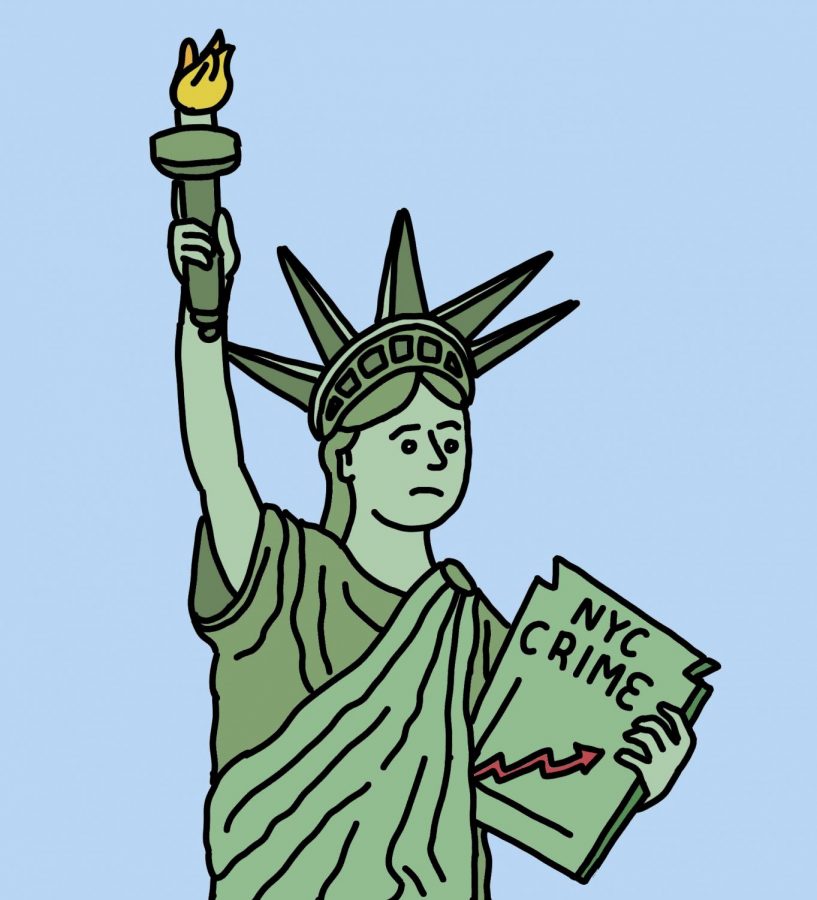New York City is not an “anarchist jurisdiction”
October 21, 2020
Since the killing of George Floyd, nationwide protests have called for defunding the police. It is, admittedly, an incredibly radical proposition — one of which Democratic presidential nominee Joe Biden is not even a proponent of, despite what his Republican opponents may say. Regardless, a rise in crime in several states throughout the U.S. has been claimed to be directly related to the proposition of police defunding; such an alleged correlation, as well as a hesitance to properly let officers do their job during the protests, has led to Attorney General William Barr to cut funding in jurisdictions like New York City, Portland and Seattle late last month. While it is true that crime rates have been irregular in comparison to previous years, it is worth analyzing whether the crime rates are as worrying as they are made out to be, and if a reduction in police spending is the driving factor of the spike in violence.
There has indeed been a rise in the number of shootings and murders in 2020 compared to the previous. New York City saw a 140% increase in shooting and a 50% increase in murders in May and August. However, this growth in violent crime was not coterminous with the billion-dollar cut from the police budget — confirmed in July of this year — or when the protests began in late May. Rather, it has been a pervading issue that has not only affected New York City, but many other cities with boiling racial tensions. In the first half of 2020, for instance, there was an upward trend of shootings and murders in major cities such as Chicago and Philadelphia. While this rise can be associated with the mounting weariness toward police forces, it is equally attributable to growing discontent over the economic fallout and stringent restrictions brought on by COVID-19. In New York, homicide incidents were steadily rising before the lockdowns but skyrocketed soon after.
Moreover, while certain forms of crime have risen, many others have dropped. Drug-related offenses, for example, were already declining before and during the peak of the pandemic. Drug crimes rose once officers exited quarantine and resumed their typical drug searches, but once again dropped significantly following the protests. Although commercial burglaries increased by 58% during the protests, they returned to normal rates soon after they subsided.
The trends revealed in these crime statistics can be found in nearly every major city, so the question remains – why has the Trump administration specifically targeted New York City to reduce its federal funding? Barr has criticized Portland, Seattle and New York City as so-called “anarchist jurisdictions,” as protests in these cities are the most concentrated and have endured the longest. Each of these cities is led by Democrats, whom many Republicans consider to be far too lenient towards protestors. Barr even stated that he hoped that these cities would “reverse course and become serious about performing the basic function of government and start protecting their citizens.”
Of course, how this administration envisions “protecting citizens” is through reversing budget cuts and arresting protestors. Neither of these moves has effectively stifled a systemic rise in violent crimes – they are merely blackmailing to the highest degree. If these cities do not comply with the mandated forms of policing, then the city could be denied upwards of seven billion dollars in funding.
As a New York City resident, I can attest that the city is far from an “anarchist jurisdiction.” It is far from a place which has, according to the president, allowed “themselves to deteriorate into lawless zones.” This year has been difficult enough without a Commander in Chief who aggressively attempts to gaslight cities into complying with him. New York has endured worse; a tantrum-prone president should be easy to overcome.





















